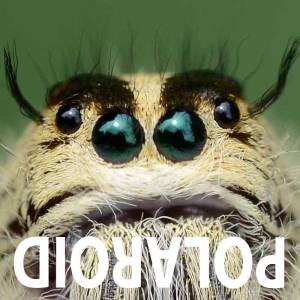Red Dragon
Of all my bug subjects I would have to say that dragons are my favorites. Hardly a day goes by when I haven't clicked off at least twenty dragon shots just for fun. I have just checked my files and I have 590 keepers, 400 of those taken in the last four months.
I only have some half a dozen species to play with at this location. If I had the money, I would relocate tomorrow, probably to south east Sulawesi, a true bug paradise, one of the few remaining locations peppered with undiscovered bug species. Alas the area is vanishing fast due to the rich mining opportunities and bugs, no matter how fancy and rare, take a very low priority. Still, I hope to make it my home one day.
I digress, back to dragons. Because they are so big, I don't need to get so close and so have a bit more depth of field to play with, even so, you can't get everything in focus. This is one of my favorite angles to shoot dragons because I can actually get all the main features in the focal plane: the hairy nose, the three tiny ocelli, the nearest compound eye, the complex detail at the wing root across the back of the thorax, the abdomen all the way to the tip and most impressively, one of the wings, all the way to the tip.
In the blipped image, the wing looks a tad out of focus, but when I zoom in, it is actually quite sharp. The very slight fuzziness is actually the microtrichia or hairs on the wing, as discussed on the 18th October.
As for technique, I focus on the tail and eyeball the ocelli and wingtip, repeat over and over until they all seem sharp, a final focus on the tail and fire. If I really want the shot, I will repeat this procedure over about twenty times or more.
The rules say 'focus on the eyes', but I always seem to lose the tail. The thing with the tail is that it is simple and uncluttered and so it is either in focus or not. The head on the other hand, is very complex and even with a slight error, you are bound to catch some part of it in focus. The hairy nose is broad and hard to miss. Catching the wing is the hard part and is why I take so many shots, slightly adjusting my position each time.
The most important aspect of dragon photography is the approach. About a year ago, I calculated that my success rate was about 5%, that was a lot of ups and downs for one shot. Now my success rate for approach is closer to 50%.
I can look at a dragon and know if I have a chance or not. Firstly I don't even bother unless the dragon is presenting a good view. The dragon has to be settled on the perch, preferably hunting and returning to the same perch. You can read the body language as you approach. Watch the wings and the head, if they move at the same time as you, then you have been spotted and the approach is doomed unless you stop and let the dragon settle some more. If the dragon's head is rotating upwards to scan the sky, then you are OK.
The approach has to be clear and in a straight line towards the dragon. Check the ground for twigs and stones that might cause a disturbance or a problem to your shooting position. The camera has to be set and in front of your face before you start and a clear plan formulated for the shooting position. Look after your shadow, make sure it does not cross the dragons eyes.
Dragons don't focus, they see light and dark, so as you approach, your profile has to remain the same, so you have to reduce your height. If you must move your hands around for a final adjustment, keep them in front of your body and your elbows in. If you must move to the side, do it extremely slowly.
If during the approach the dragon flies off, stay absolutely still for about five seconds. The dragon may well be hunting and will return to the perch. If you shout "drat" and stand up straight away, then the dragon is not going to return.
Once you have made your approach, you will be surprised of how tolerant the dragon is to your presence. Camera click and even flash don't seem to disturb the insect. After completing the full frame shoot, you will find that you can easily move in for some macro work. The dragon draws the line when you cannot resist the temptation to reach out and touch the wing - gone for good!
I guess my fingers got carried away here, sorry about that.
Dave
- 25
- 1
- Nikon D7000
- f/8.0
- 105mm
- 400

Comments
Sign in or get an account to comment.


